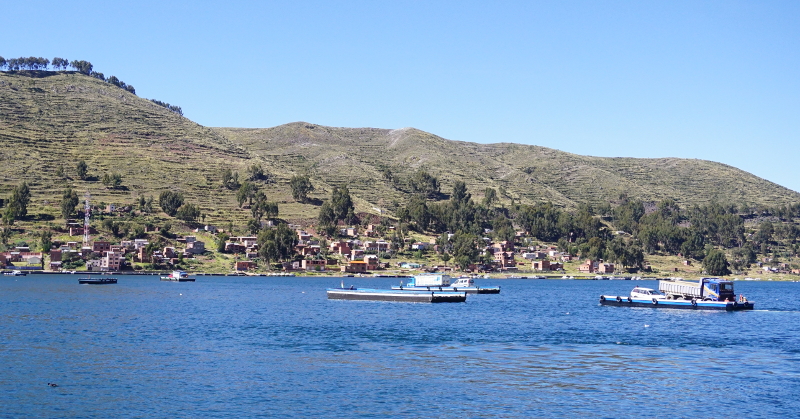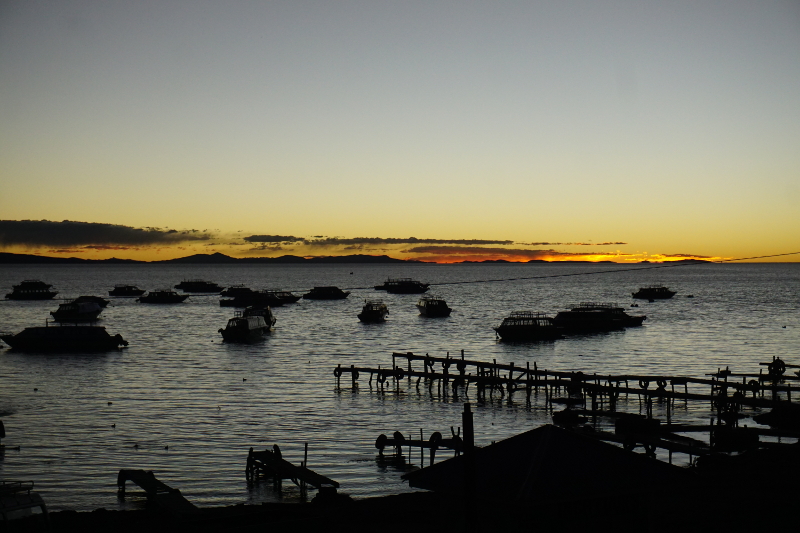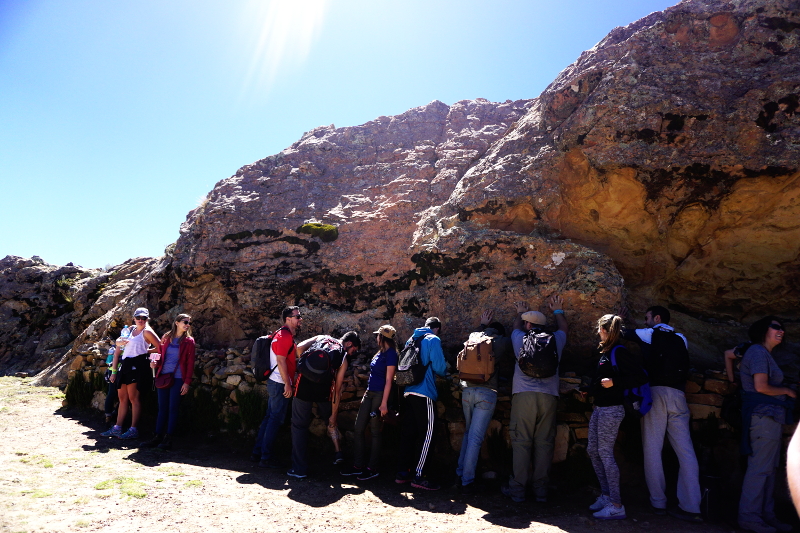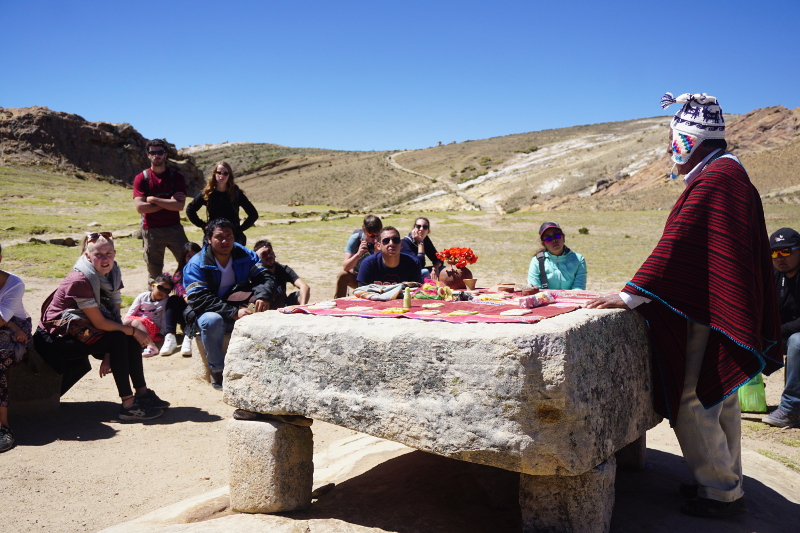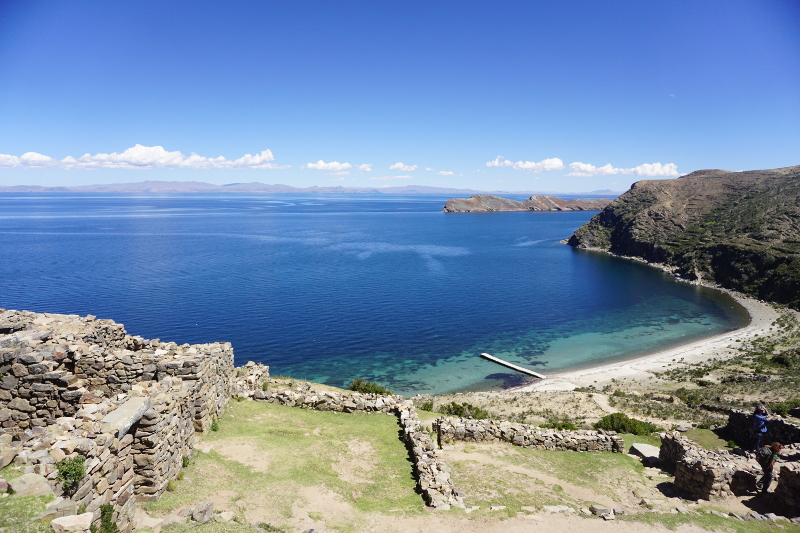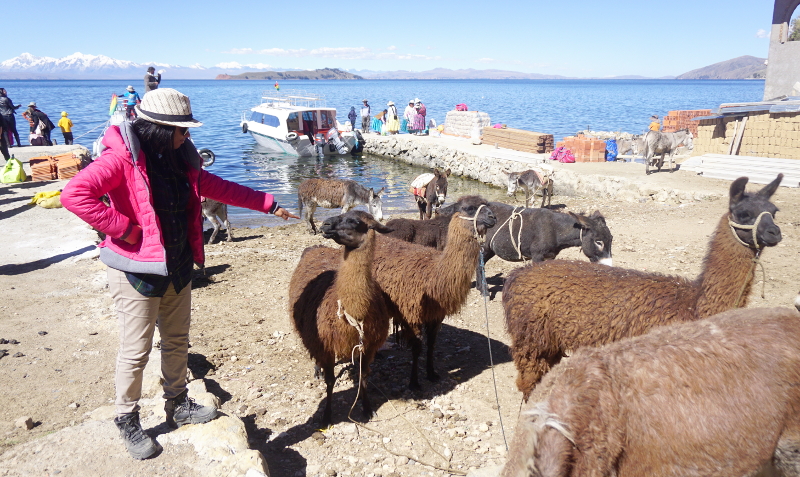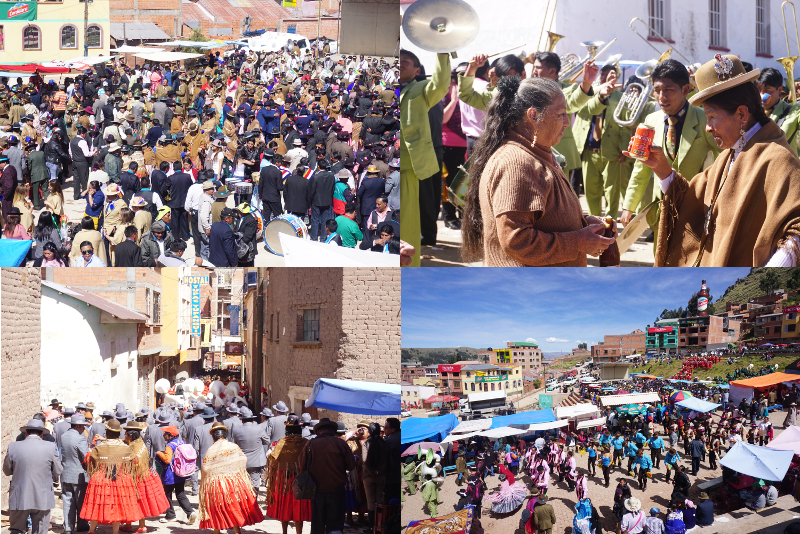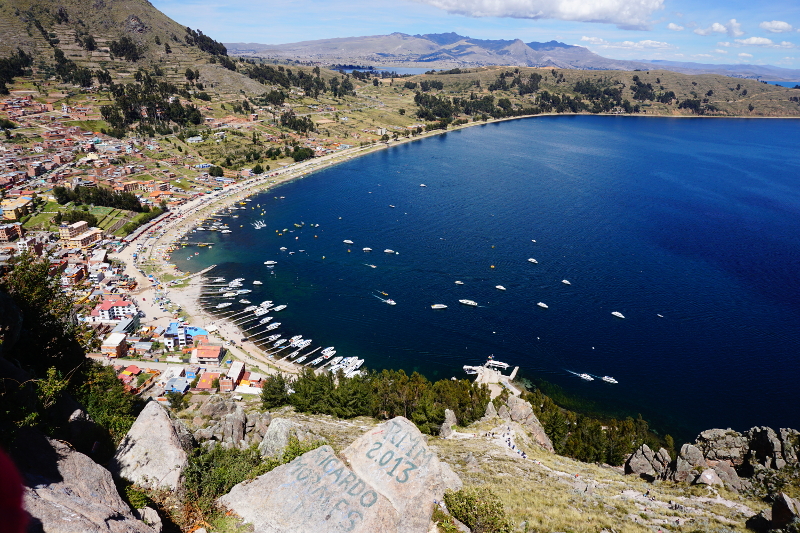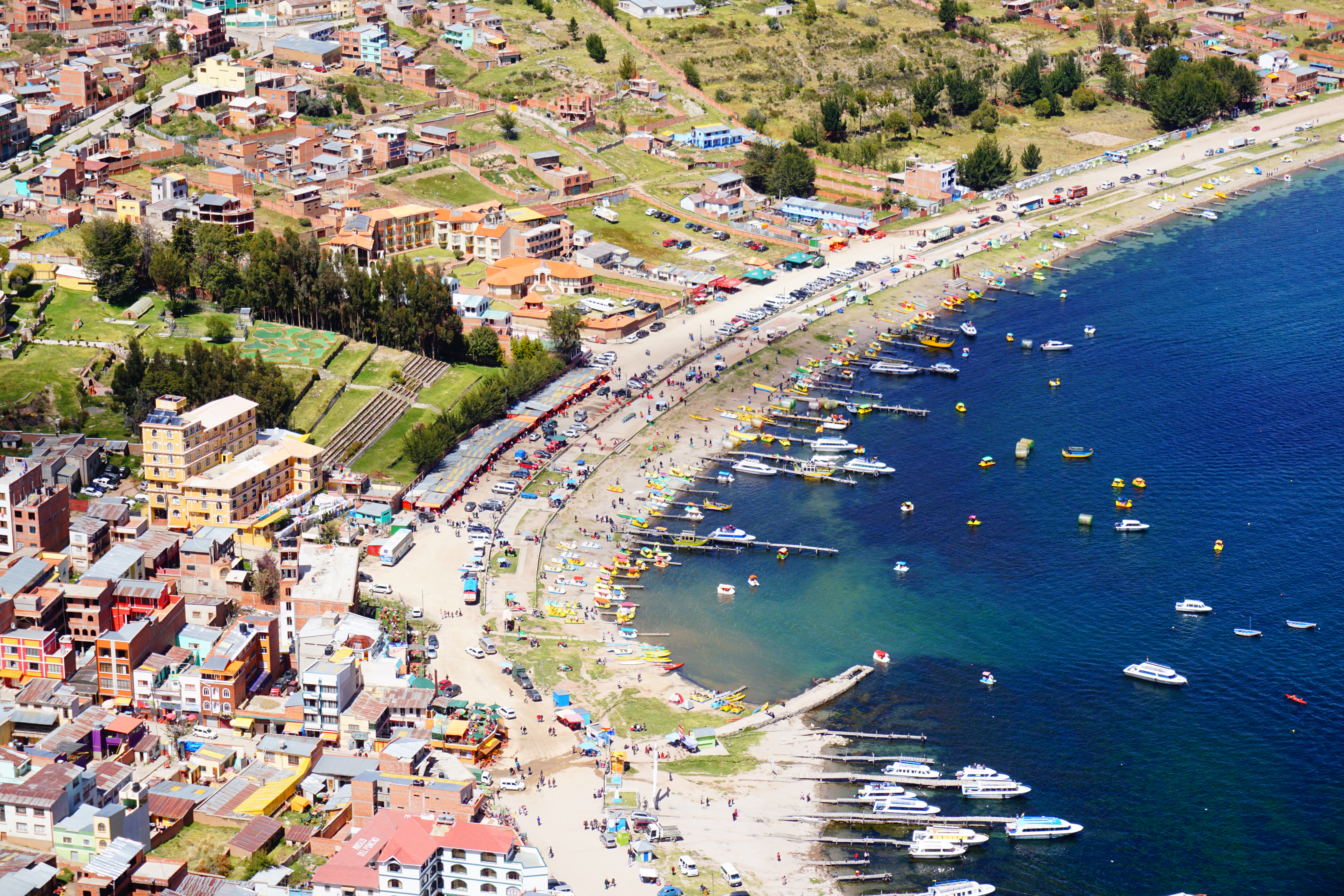Once we were done with the Uyuni tour, we headed to La Paz for a few days of rest and then planned to move on to Peru via Copacabana.
Getting in
We took a bus from La Paz to Copacabana which was supposed to take 4 hours but took close to 6 hours. It was my dream to visit Lake Titicaca, the highest navigatable lake in the world, and it finally came true in Copacabana. In fact, there is a point where everyone has to cross a small section of Lake Titicaca on a boat, there is no road. We took the boat across while the bus got on a slow barge.
The cost of the bus was 30 Bolivianos per person, USD 4, which was comparitively expensive but we got told the prices were high due to the fiesta starting the day after. “A fiesta” we thought “that should be cool”. For the first 2 hours in Copacabana it was anything but cool!
No hotels
We entered Copacabana without a hotel reservation. That never seemed to be a problem, we usually got to places and then went looking around for a place to stay. But due to the fiesta we walked from hotels to hostels with no relief. All of the places could only let us stay 1 night and then we would have to check out for the subsequent night. We offered to pay more but to no avail. We finally decided to take a room for the night, leave our bags and go hostel hunting in rest of the town.
Hostal Inka Roka was in a small alley away from the main square. Normally, we wouldn’t have even noticed it but we were desperate and had asked over 30 hotels already. The little lady walked out of her room and said she had a room for the next night. The cost was 50 Bolivianos per person, USD 7, which was a real bargain given the conditions. We reserved it and breathed a sigh of relief. We had initially planned on staying 3 nights but that wasn’t to be. We changed our bus ticket to leave Copacabana one day earlier.
Sunset over Lake Titicaca
After the pain of walking around trying to find a hotel, we walked along the shores of Lake Titicaca with some peace of mind. All the restaurants on the waters edge were offering happy hour all day and night long so we sat down and chilled while watching the sun go down at a lake at 3900 meters. Paradise!
Isla Del Sol Tour
One of the highlights of Copacabana is the Isla Del Sol and Isla De La Luna. The islands of Sun and Moon are important in the Aymara and Inca traditions. To this day, people still follow the traditions and give offerings on these islands.
We paid 50 Bolivianos for both of us, USD 7, which was a bargain and got on the ferry by 7:30am. The ride was slow but picturesque and we started with the north of Sun Island first. There was an added charge of 10 Bolivianos per person for a guided tour. As we ascended the island, we could clearly see the Cordillera Real range in the distance. What a sight!
After hiking for 1 hour, we arrived at the Puma Rock which is very important to Inca and Aymara cultures. The guide showed us the rock carvings of Condor, Puma’s head and Serpent which are the symbols of Sky, Earth and Underneath the Earth. We all made a wish in this place and then moved on to the mesa or the table.
The mesa was where the Incas and Aymaras gave offerings to the Gods or even sacrificed animals. A shaman there explained the history and would be blessing people if they wished. We chose not to do it.
The next stop were the Ruins of a Temple overlooking Lake Titicaca. It was a beautuful sight and the temple was somewhat of a maze. We took a few shots and then descended to the pier.
The southern part of the Island was a bit less interesting. For one, it was a steep hill only metres from the pier and we couldn’t see any ruins. Instead of walking uphill, we took photos of llamas and donkeys whose job it was to carry the luggage upstairs. The only highlight of the South end of the island was the mountains were even closer here and it again made for great images.
Fiesta
Now that we had a room, we could enjoy the fiesta. As we returned from the island, the fiesta was in full swing. Shruti took shots of grandmothers dancing, men drinking and dancing, people drinking in the street and dancers with the most immaculate outfits as well as masks. That night the fiesta parade went on til 7pm but we could hear drums and music till 2am. People say Bolivians are a quiet inward people but give them a fiesta and watch them become friendly.
Being brown, we didn’t have this experience but we heard many white people say that the grandmas and gradmas yelled “Gringo!!!” while drunk and made them drink. The next morning the story was no different except Inka Roka had a whole troop of dancers staying there. The entire army had to shower and then practice their songs. We heard every bit of it!
As we went out at 9am for breakfast, we realised that the party had moved higher up the town. We followed the noise and sure as hell people were drunk and dancing at 10am. The parade was in a different part of town and we saw lots of people participating in the parade with their suits, outfits and masks. They were singing songs that were anti-society and waving their noise making tool. We were really lucky to witness this event!
Copacabana Fiesta Video
Virgin on the Hill
The Virgin of Copacabana resides on top of a hill and is never moved from there. We decided to take a break from the parade and climb the hill. As we were halfway, we noticed that there were shamans for hire making offerings for people. That was a bit strange at a Christian site.
As we reached above, the view was breathtaking, Lake Titicaca could be seen to the end of the horizon. At the highest point on the hill was the Virgin of Copacabana who is very famous in the region.
To take in the view, we sat on a rock, bought a beer and decided to relax before heading down. Words cannot desribe the beauty of the place and it will be a memory forever seeing Copacabana beach from the top.
Yet again, we saw shamans doing offerings with beer and small models of wishes like car, house, baby etc. We concluded that as with many other sites in Bolivia this was a pre-Christian site and the people somehow mixed religions when they converted.
The Town
Copacabana is a small town but very touristy. This means that there is variety of food but it didn’t feel very Bolivia. Luckily, due to the fiesta, lots of people brought out their food carts and I managed to try some of them. It was a great experience!
Crossing border
We took the 6pm Lake Titicaca bus to Puno, Peru. The border process was pretty straightforward and we had no issues whatsoever. The only issue was where to change the money. Copacabana town was a bad place with 2.35 Boliviano for every Sole. I managed to bargain down a guy at the border who gave me 2.20 for a Sole. On the Peruvian side, it was slightly better at 2.16-2.18 depending on your bargaining. That ended our trip in Bolivia for the exciting Peru!
